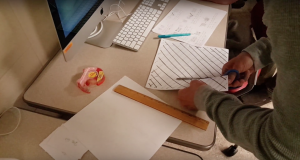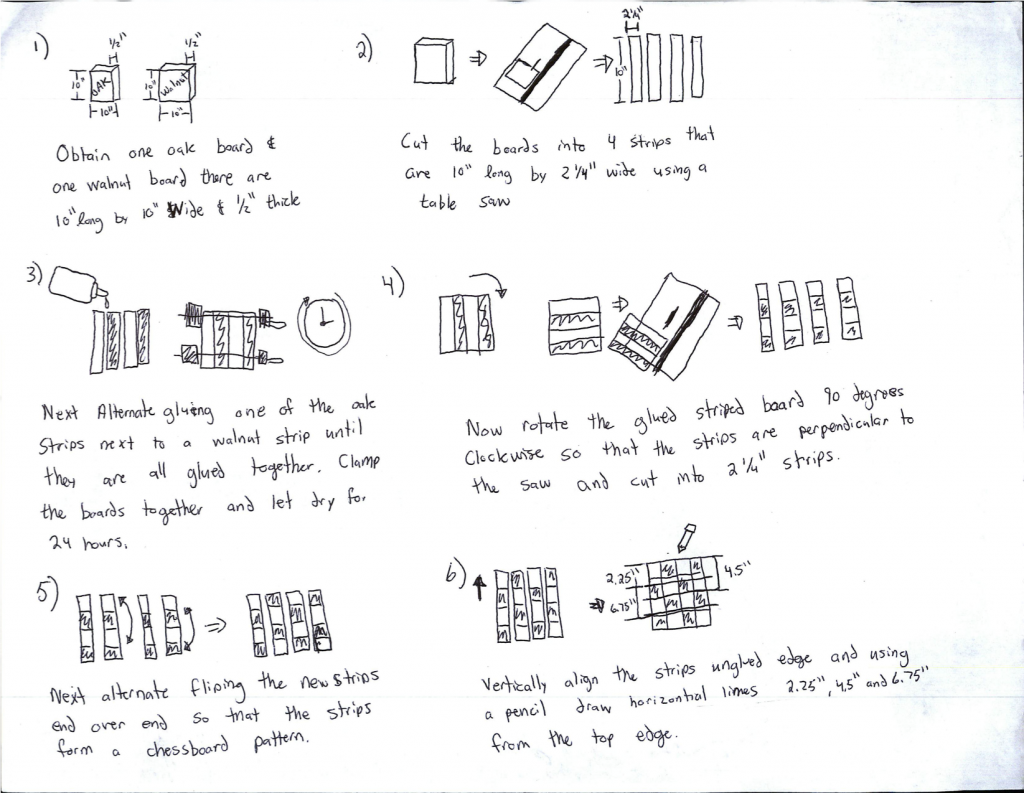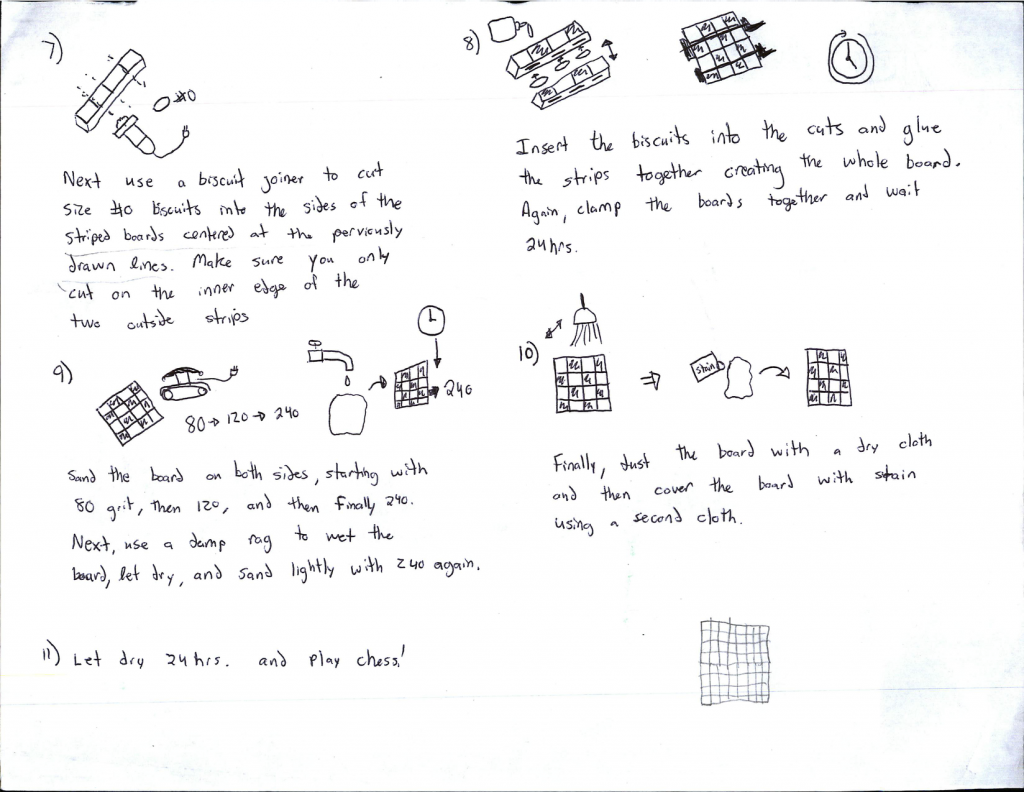Blog Post 2 – Usability Testing
In a recent a assignment I worked with a group to create instructions on how to build a chess board. As part of our creation process we tested our instructions in a usability test. Our usability test happened in a classroom and our instructions were to make a wooden chessboard so an obvious restriction in our test was the location of the test and the materials used. We were able to mitigate the problem by having user create a paper chessboard using our steps. The results of the usability test lead to three major changes in our instructions.
-

An image of our usability test in action.
The largest flaw in our instructions were the dimensions of the materials needed. Our original instructions only created half of a chess board. As a result we changed the materials needed to create a full a chessboard.
- Another restriction on our test was our audience’s lack of woodworking experience. Our target audience is a chess enthusiast with prior woodworking experience. The instructions contained several technical steps that required power tools that the user needed prior experience to operate. Due to the need for experience, we determined from our test that it was necessary to tell the viewers of our instructions that the instructions were meant for people with prior woodworking experience.
- The final modification in our instructions helped to clarify each step. Throughout the test we had the user explain their thought processes while viewing our instructions. Several steps had sentences that were confusing the user. In response, we reorganized or clarified each step to help clear up confusion. As a major part of clarity we added a materials list at the beginning so the viewer knew what they needed before they actually had to use it.
- Original Instructions
- Original Instructions
To see more about how to build chessboard view my Technical Instructions page.



